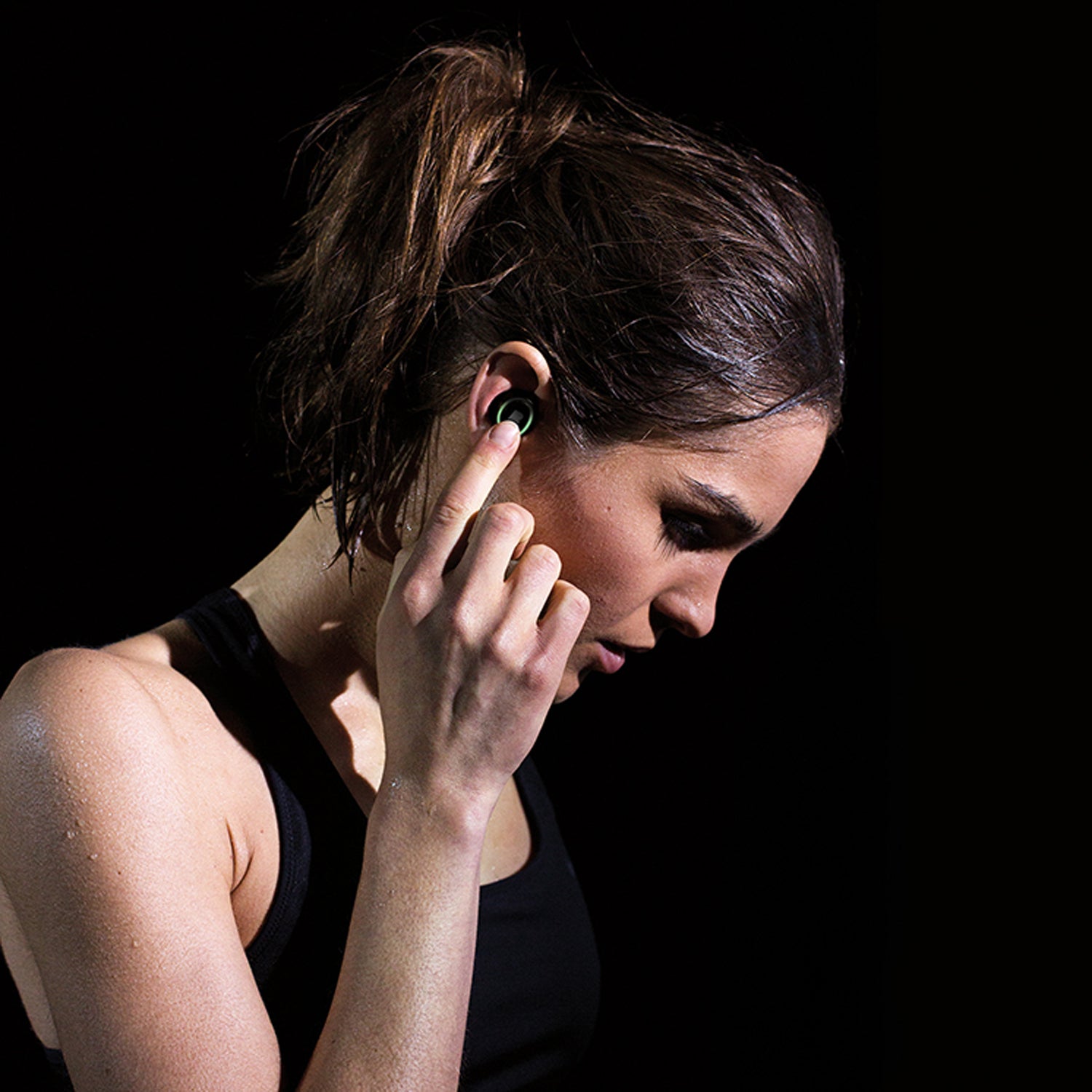Most fitness trackers today (including the Mio Alpha, the Fitbit Surge, and the upcoming Apple Watch) use wrist-based heart-rate monitors to measure everything from beats per minute to calories burned. But a few new companies argue that we shouldn鈥檛 monitor health from the wrist鈥攚e should monitor it from the head.
This is partly a matter of accuracy. Wrist heart-rate monitors rely on LEDs embedded in the device to measure the flow of blood through the capillaries. The light reflects off the arterial movement of your pulse, translates the reflection as an ebb and flow, and turns that information into the number you see on your device. But bend you wrist while pressing a barbell or during a run, and you interfere with that LED-to-capillary transmission. In our testing, we鈥檝e found the only way to avoid this issue is to stick with very tight-fitting sport watches: if there鈥檚 a gap between the LED and your skin, you get spotty data.
The ear is a different story.
While the wrist is full of muscles and tendons that move, the ear is all cartilage and about the most inert part of your body. It鈥檚 also dark and the arteries here are near the surface of the skin. Shove a sensor into your ear and the signal is about 100 times clearer than at the wrist, according to sources at , a major supplier of sensing technology.
Unlike at the wrist, if you have sensors on either side of the head, you can determine balance, motion, cadence during walking, running, skiing, riding a bike, and more.
As a result, companies such as Jabra, LG Electronics, SMS Audio (through a collaboration with Intel) and now are releasing earbuds with built-in heart-rate monitors. We鈥檙e particularly excited about Bragi鈥檚 Dash Bluetooth earbuds (to debut this spring) that play music, track fitness metrics, take calls, and can be controlled via taps on the casing.
Bragi CEO Nikolaj Hviid says the ear allows for steady, consistent heart-rate monitoring during exercise (something we鈥檝e experienced firsthand with the Jabra Pulse) as well as bilateral sensing. Unlike at the wrist, if you have sensors on either side of the head, you can determine balance, motion, and cadence during walking, running, skiing, riding a bike, and more.
In the future, this should enable an ear-based sensor to analyze your form (say, you have a stride imbalance while you run) or learn gesture controls (nod your head to answer a call, or shake it to send to voicemail). At the moment, no ear-based sensor has these capabilities, but Hviid says it鈥檚 a possibility for upcoming models.
The ear is also a good place to add oxygen sensors, something the Dash will have this spring. By measuring oxygen levels in addition to pulse, athletes can determine when they鈥檝e crossed the threshold from an aerobic to an anaerobic workout. This is a more accurate way to gauge output than relying solely on general heart-rate zone benchmarks.
Hviid says the ear is also an excellent place for measuring blood pressure and even blood sugar because the signal-to-noise ratio is so much better than at the wrist. The first-generation Dash won’t have this function, but it鈥檚 part of why Bragi (and many others) believe that the smart earbud holds so much more promise for tracking technology than the watch.聽
Earbuds have limitations, however. The main one: they’re more invasive, and less comfortable, than a watch.聽
You might wear earbuds to take calls at work, and you might wear them for gym workouts or while running. But unlike even a moderately comfortable watch, you鈥檙e not going to walk around 24/7 with the Dash plugged into your head, and so there are limitations to how much benefit you might accrue from wearing them.
Which isn鈥檛 really surprising. The more we learn about smart devices, the more we see that any single wearable can鈥檛 answer all of our needs. It’s the same reason you don鈥檛 want to tap out a novel on your cell phone鈥攊t鈥檚 the wrong tool. Getting a complete picture of our health and fitness, at least for now, will still require multiple puzzle pieces.聽


